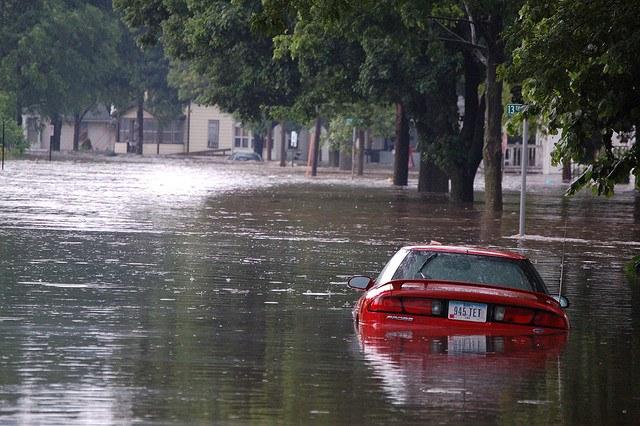
The world is almost halfway to the 2 degrees Celsius global temperature rise that experts warn we can’t go beyond -- not if we want to maintain life on this planet as we know it.
The U.K.’s Met Office released data this week that shows the global mean temperature at the earth’s surface is set to reach 1 degree Celsius above pre-industrial levels. The data is from January to September this year. In other words, 2015 could be the year we make it halfway toward the 2 degrees Celsius warming level.
Two degrees Celsius is the level of temperature rise countries are working to stay beneath, and next month they will converge in Paris for climate talks. However, even if the warming is limited to the 2-degrees benchmark, sea-level rise would still be a problem that will affect land where 280 million people currently live, a recently released report shows.
A 2-degrees warming scenario could cause 15.4 feet of sea-level rise. If warming reaches 4 degrees Celsius, land where 627 million people live would be impacted as sea level rise would “submerge land,” according to the report. So, clearly reducing carbon emissions to meet the 2-degrees benchmark would reduce the sea-level rise considerably.
The projections in the report, published by Climate Central, are for post-2100 sea levels. If warming is limited to 2 degrees, “the locked-in sea level rise projected would not submerge land home to more than half of today’s population in any listed megacity,” the report states. But out of the 10 megacities listed with the highest populations that would be affected by sea-level rise, five would still be affected: Shanghai; Hong Kong; Hanoi, Vietnam; Mumbai, India; and Osaka, Japan.
Note that all the megacites that would be affected by sea-level rise are in Asia. The continent is home to the six most at-risk nations for threatened land, as measured by a total 2100 population projection, and nine of the 10 most at-risk nations, as measured by population percentage in the same places. A whopping 74 percent of the global population on at-risk land live in Asia.
Twelve countries have over 10 million people living on at-risk land under the 4-degrees warming scenario, and eight of them are in Asia (India, Bangladesh, Vietnam, Indonesia, Japan, Philippines, Thailand and Myanmar). Limiting the temperature rise to 2 degrees would reduce exposure by over 10 million people in all but two nations listed (Thailand and Myanmar).
China is the country with the “most to lose from business as usual,” the report warns. The biggest emitter of greenhouse gas (GHG) emissions in the world, China has 145 million citizens on land at-risk of sea level rise if global temperature rise is allowed to reach 4 degrees Celsius. If the 2-degrees benchmark is maintained, China would have 64 million people at risk.
The Climate Central report builds on a paper published in October by the Proceedings of the National Academy of Sciences (PNAS) of the U.S. by the same authors. The paper focused on sea-level rise in the U.S., finding that over 20 million people in the U.S. live on at-risk land. The total area includes 1,185 to 1,825 municipalities “where land that is home to more than half of the current population would be affected,” the paper states. Among those municipalities are at least 21 cities that have populations of over 100,000.
With “aggressive” carbon emissions reductions, over half of the municipalities would avoid risk -- “if the West Antarctic Ice Sheet remains stable,” according to the paper. And over half of the “U.S. population-weighted area under threat could be spared.”
The findings of both the Climate Central report and the PNAS paper highlight the importance of the powers that be hammering out a good climate agreement next month in Paris.
Image credit: Flickr/U.S. Geological Survey

Gina-Marie is a freelance writer and journalist armed with a degree in journalism, and a passion for social justice, including the environment and sustainability. She writes for various websites, and has made the 75+ Environmentalists to Follow list by Mashable.com.














